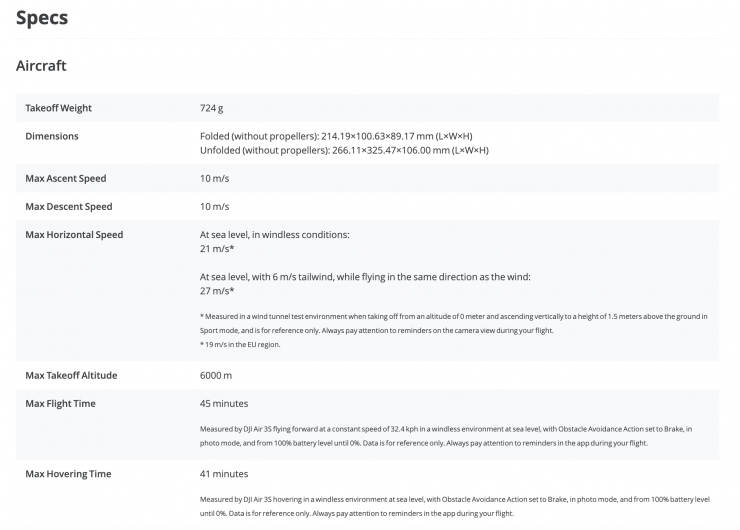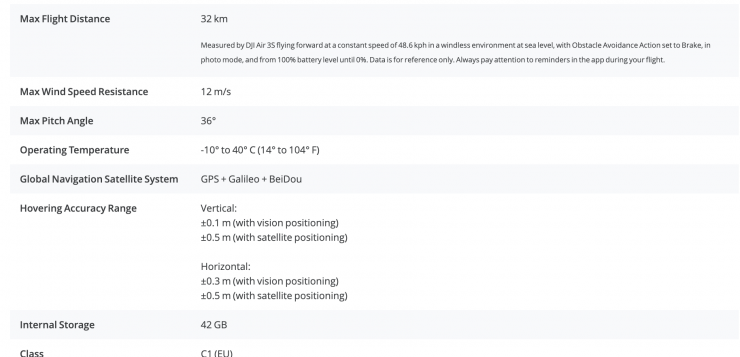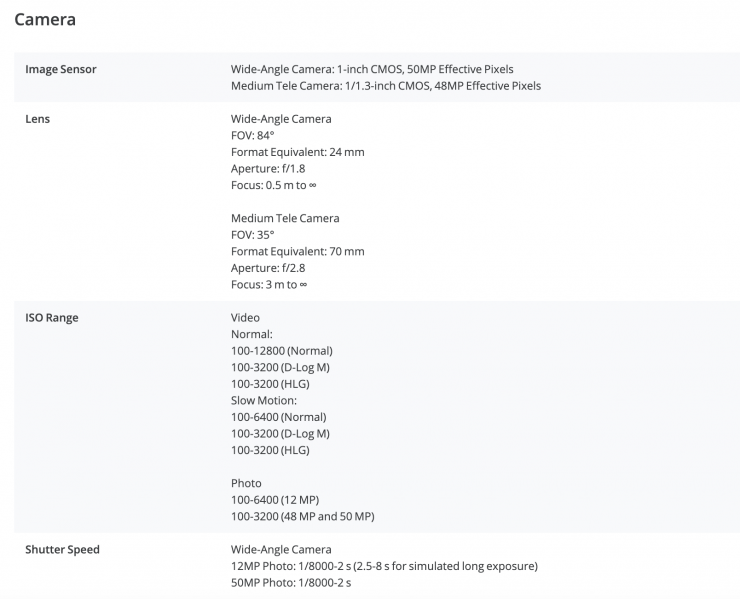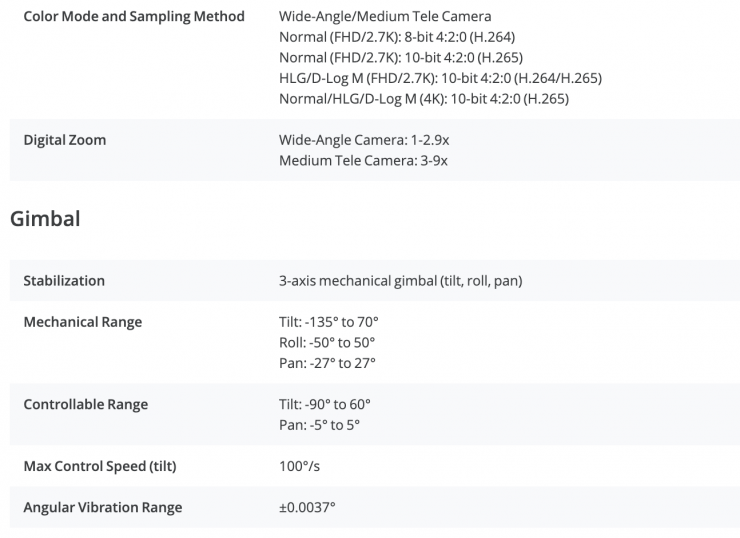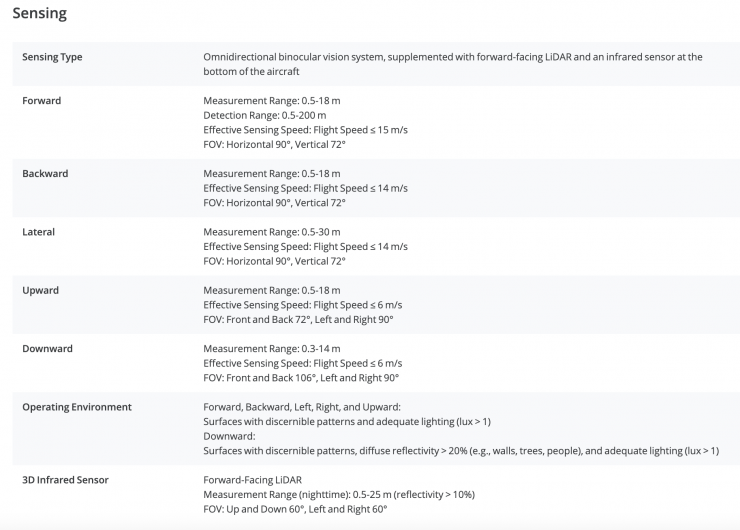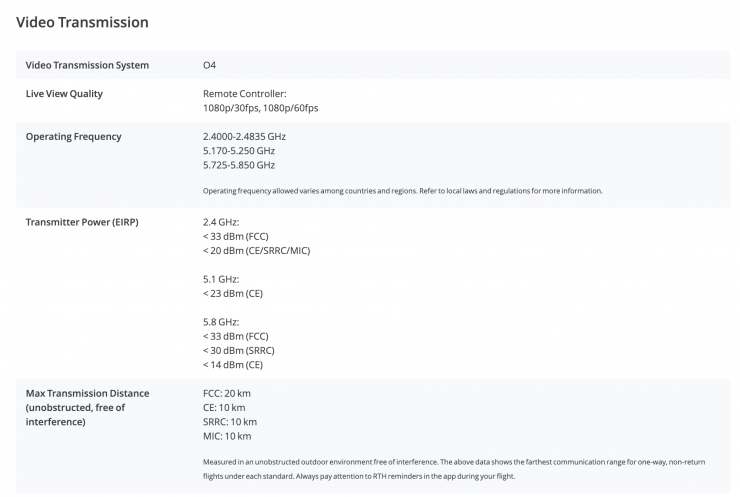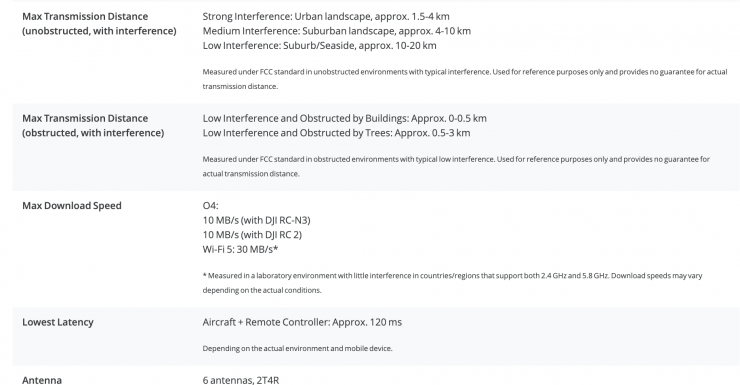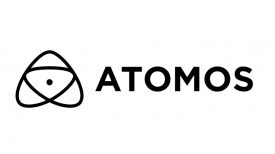DJI has unveiled its new Air 3S drone which features a dual-camera system, with a bigger Type-1 sensor on the main camera and 10-bit video capture.
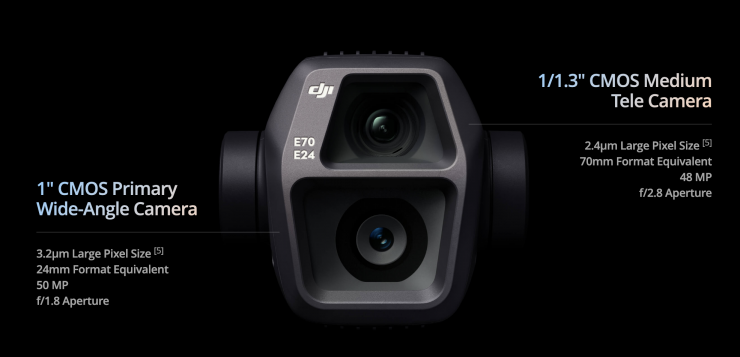
The main camera features a 50MP Type 1 CMOS sensor with a 24mm lens that supports 4K 60p HDR and 4K 120p video capture in H.265 10-bit D-Log M. The second camera has a 48MP Type 1/1.3 70mm medium telephoto camera that also features a 3x telephoto zoom. It can also record in the same resolutions and modes as the main camera.
Wide-Angle Camera/Medium Tele Camera:
H.264/H.265
4K: 3840×2160@24/25/30/48/50/60/120*fps
FHD: 1920×1080@24/25/30/48/50/60/120*/240*fps
2.7K Vertical Shooting: 1512×2688@24/25/30/48/50/60fps
* Recording frame rates. The corresponding video plays as a slow-motion video. Slow-motion videos and 4K video recordings only support H.265 encoding.
The Max. bitrate is H.264/H.265: 130 Mbps.
Color Mode and Sampling Method
Wide-Angle/Medium Tele Camera
Normal (FHD/2.7K): 8-bit 4:2:0 (H.264)
Normal (FHD/2.7K): 10-bit 4:2:0 (H.265)
HLG/D-Log M (FHD/2.7K): 10-bit 4:2:0 (H.264/H.265)
Normal/HLG/D-Log M (4K): 10-bit 4:2:0 (H.265)
Digital Zoom
- Wide-Angle Camera: 1-2.9x
- Medium Tele Camera: 3-9x
Compared with the previous-generation DJI Air 3, the DJI Air 3S employs a more advanced video encoding compression algorithm that reduces video file sizes by over 30% without compromising image quality, saving valuable storage space
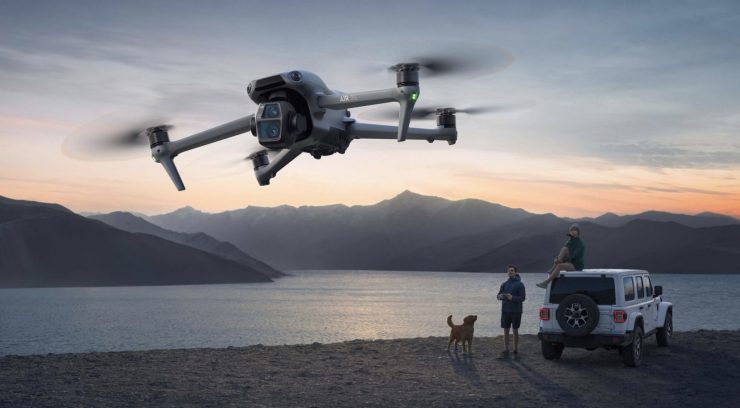
DJI is claiming that the Air 3S features improved image quality. They boldly state that the image quality is better than the Mavic 3 Pro.
In the D-Log M and HLG modes, the maximum ISO is 3,200, while in standard color profiles, it is 12,800.
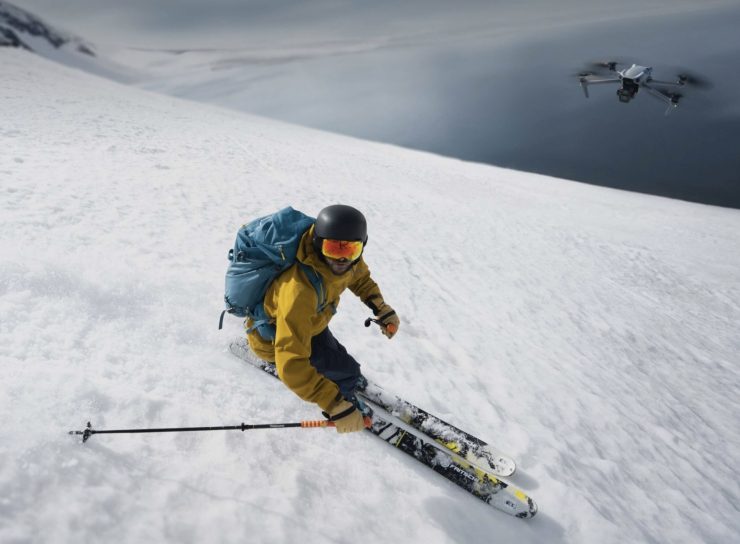
The Air 3S features ActiveTrack 360 which keeps any subject in frame. It also features a new Subject Focusing feature, which keeps the subject in sharp focus even during manual flights or when that subject veers off-center.
The Air 3S has a panorama mode that works with both the main and tele cameras. It stitches together multiple images with a manually selected subject or area.
The drone features better low-light performance and a new nightscape obstacle-sensing mode to make flying in lower-light conditions safer. By utilizing real-time vision positioning and map construction technologies, the DJI Air 3S can memorize flight paths when adequate lighting is available. This ensures a safe return when taking off from locations without a satellite signal.
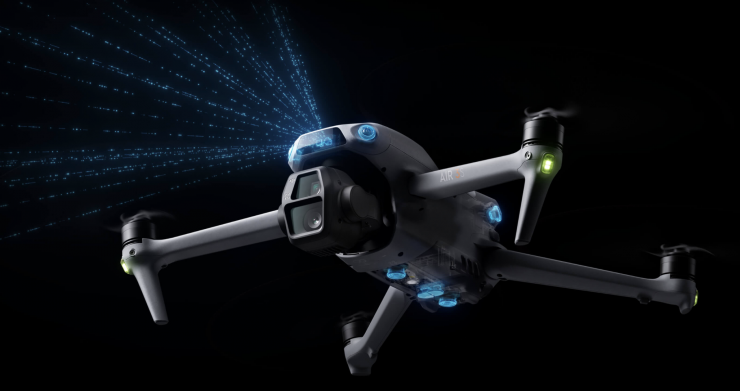
The Air 3S is also DJI’s first drone to have forward-facing LiDAR while also featuring downward infrared time-of-flight (TOF) sensors and six vision sensors (two at the front, rear, and bottom). This allows it to have omnidirectional obstacle sensing even at night. DJI claims that the Air 3S can automatically identify and move around obstacles during its flight and return paths even in low light.

The flight time is claimed to be 45 minutes and DJI claims that it can transmit 10-bit video at 1080 60p over distances of up to 20km.

The Air 3S has 42GB of built-in storage and files can be sent from the drone to a smartphone, or via USB to a computer when the drone is powered off. You can also record directly to a memory card.
Price & Availability
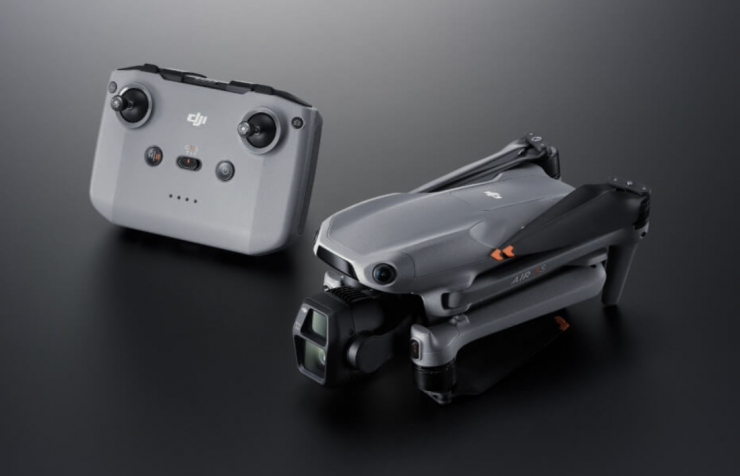
The DJI Air 3S retails for $1,099 USD. The DJI Air 3S Fly More Combo costs $,1399 USD and includes the DJI RC-N3 remote controller, an ND filter set, two additional batteries, a battery charging hub, and a shoulder bag.
The Air 3S Fly More Combo retails for $1,599 USD and includes the DJI RC 2 remote controller with a 5.5″ 1080p 700-nit high-bright screen, an ND filter set, two additional batteries, a battery charging hub, and a shoulder bag.
